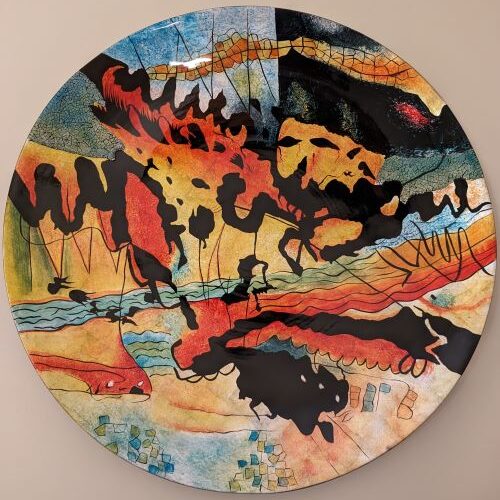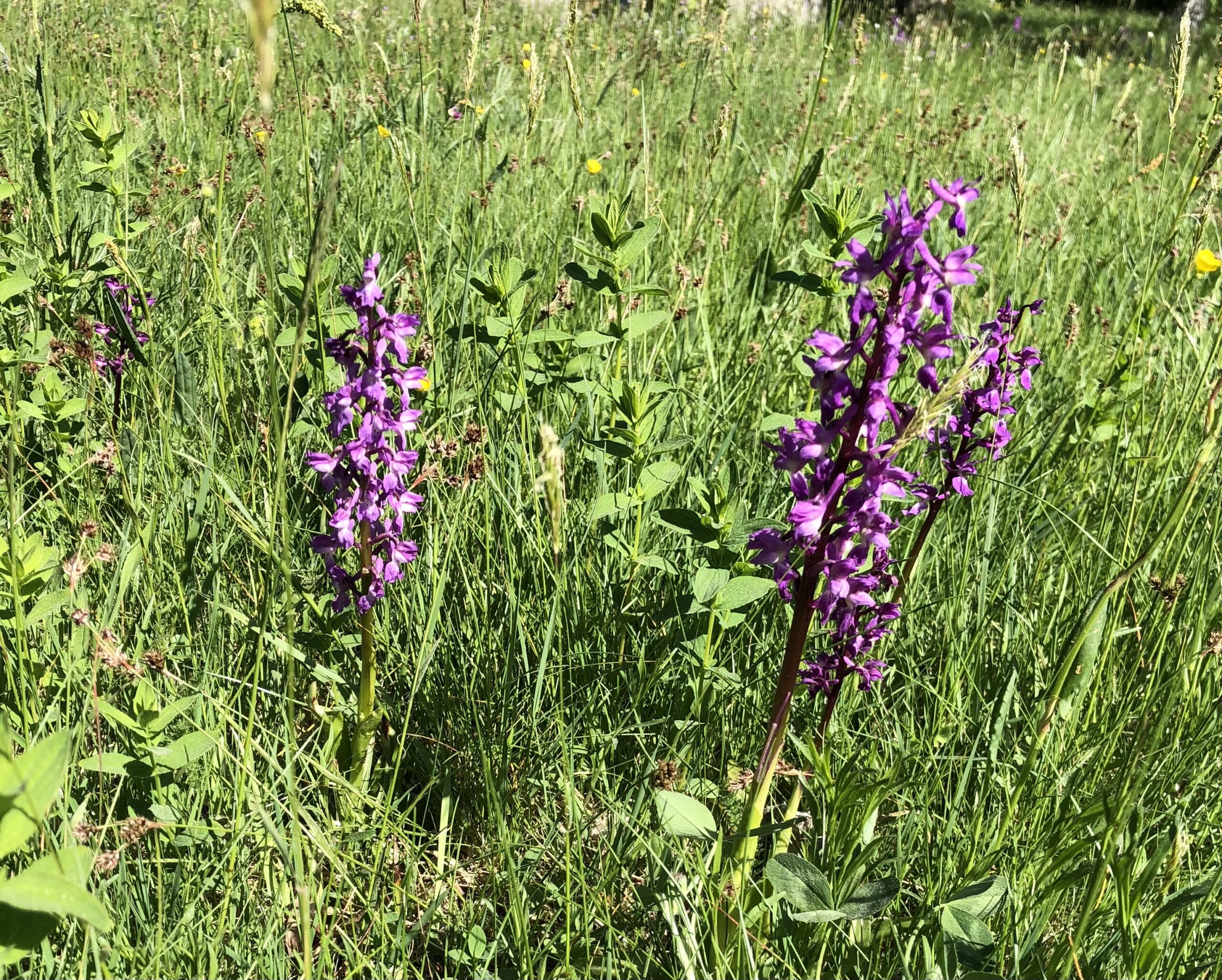She was born in 1912, in a little Swedish town. She didn’t have it easy. Her mom died shortly after she was born, leaving her father with seven little daughters to feed and raise on a laborer’s salary. It was her mother’s sister, Julia and her husband, childless, who took in the waif and raised her lovingly as their own. When I asked how far away their farm was from the town where Barbro was born, they said, “A half day behind a horse.” I imagine the sound of horse hooves on a narrow dirt road, the milk wagon bumping along, with Julia holding this tiny bundle of protoplasm with a mixture of grief, joy and terror.
At their forested farm Barbro thrived. She was free to play and learn there among calves, puppies, kittens, trees and flowers. She drank fresh milk, ate fresh vegetables, picked wild strawberries. But like I said, it wasn’t all easy. Her adoptive father died when she was 10. Julia and Barbro were alone on the farm.
Barbro went to a country school. In those days, sixth grade was considered enough for girls. They just needed to be able to read and keep track of how many eggs the hens laid, the liters of milk from the cows, etc. Well, it soon became evident that young Barbro had other ideas. She loved school and wanted more, more, more books. She wanted to learn everything.
The widowed Julia was short of money. She explained, “If you want more school, you can be a teacher.” “No,” Barbro replied, “I don’t want to teach.” Eventually Julia decided that when Barbro was older she could go to an agricultural vocational school. A school rather far from the farm, so young Barbro would board there. A school where almost all students were boys. I imagine there was competition to court Barbro, dark-eyed little fireball she was.
So she came home from ag school with a good education in farming, and fellow student Lennart, tall, slim, elegant, with a twinkle in his eye. Looked like a prince in overalls. Coming from a line of sailors, he was landless and really wanted to farm. He was the perfect match. The young couple worked Abrahamsmåla with all their hearts. There was one big field, pastures and lots of trees. And there was a beautiful meadow, with some ancient oak trees, wispy grass, and myriads of flowers. Barbro knew and loved the flowers. She identified them in the tradition of Linnaeus, the King of the Flowers, who had given them Latin names so everyone in the world could call flowers by the same names. She started pressing flowers to make her own herbarium.
Years went by, Julia passed in 1959, and by then Barbro and Lennart had a daughter and two sons. Skip forward again to 1992, when their son, Folke, had not only earned his phD in America, but arrived newly wed, with his wife, and two daughters from his previous marriage. The girls’ mother had also passed away. The new wife and stepmother was me. I was nervous about meeting Folke’s brilliant, botanically-inclined mother. Folke was actually on a business trip and left the farm soon after we arrived. So there I was, “alone” with my two little stepdaughters, meeting Barbro, their grandmother, my new mother-in-law.
Barbro knew how to break the ice. After a breakfast of oatmeal topped with fresh whipped cream she and I took our first walk to the flower meadow. I was relieved that we could share the Latin names of the flowers since I had studied botany. That was the link between us. She showed me the new book she had splurged on, beautiful Nordiska Floran (plants of Scandinavia). In that book were meticulous color drawings pointing out details that separated one flower from another. The scientific names in Latin. Her meadow flowers were all in there, including her beloved orchids.
After the farm visit, back in Minnesota where Folke and I and the girls lived, we prepared for Christmas as usual. We hoped we’d get a package from Barbro. Disappointed – no box came by Christmas. As weeks went by, Folke checked in with his mother. Yes, indeed, Barbro had sent us a package, wrapped in brown paper. She was disappointed too.
Soon after we got the shocking news that Barbro had collapsed and died as she walked upstairs to her bedroom. Folke’s older sister was with her. Everyone was stunned.
Meanwhile, in Minnesota, life went on, but the missing box felt like a cruel mystery. We did get other boxes from Sweden. One day we were happy to see a package arrive, and we all sat on the floor of our living room to open it. The girls tore into the brown paper wrapping when Folke suddenly shouted, “STOP!” We froze, never having heard such a shout from him. Pale, he stretched a shaky finger to point to the handwritten address: “That’s your Grandma Barbro’s handwriting.” Barbro had been dead for a year and a half.
When we finally dared open the box, there was Barbro’s Flora, that precious book. For me, from her. A treasure from beyond the grave. When we moved to the Swedish farm years later, I took it with me of course. I carried the heavy book to the meadow Barbro and I had visited. I greeted the flowers, imagining Barbro over my shoulder, smiling.
But wait – a postscript! Folke and I sold the farm 5 years ago and moved here to Rochester, but we still visit Sweden, as recently as last November. On that trip I actually found me a new Swedish relative and contacted her. We were pleasantly surprised to learn that both of us love botany. Over Christmas she emailed a photo of herself, kneeling in an orchid meadow much like that at Abrahamsmåla holding an edition of the same book that Barbro had mailed to me. We agreed, yes it is heavy, but it is the best book.

Copyright © 2024 Ann Sigford


Ann (without an ‘E’): I doubt that I will ever get to Sweden, but if I do, it will be because of your writing.
Despite distance and language, the love of books is universal.